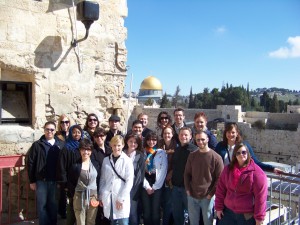Israel Reflections–Negotiation Aikido Israeli-Style
On our very last day in Israel, with the sun shining and after spending an hour on the beach, we forced the students back on the bus to Tel Aviv University to have a joint class with Moty Cristal’s class from the International Master’s in Dispute Resolution program. If ever I was worried that the students would really resent us, this presented the golden opportunity. Luckily, Moty was outstanding and here are two student comments about his presentation:
From Mary Ferwarda: It was the last day in an exciting, but very packed and exhausting schedule. We had just come from free time on the beach in Tel Aviv on the most perfect morning — sunshine, light breeze, few crowds — and I, personally, was dreading having to sit inside for yet another lecture. When we all packed into a room at Tel Aviv University, and the speaker pulled up his Powerpoint, I took a deep breath to pool all of my energy to pay attention. I should have taken a deep breath to prepare to be blown away. Mr. Moty Cristal lectured, or rather, preached, his piece on crisis negotiation to a roomful of rapt students and professors. Combining a pointed wit, quick humor, and a couple of Hollywood movies, Mr. Cristal walked the class through his experience negotiating with Palestinian militants who barricaded themselves in the Church of the Nativity in 2002 to avoid capture by the Israeli Defense Forces (IDF).

